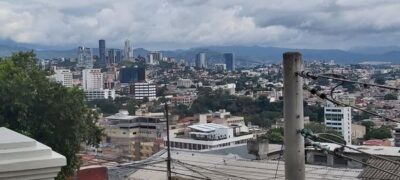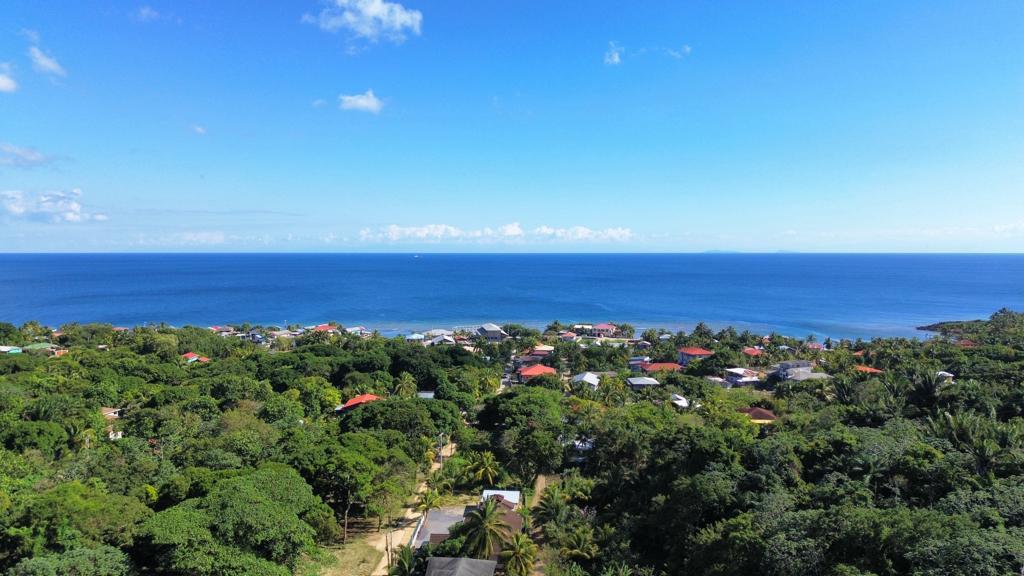Tegucigalpa
Honduras, a mountainous country bordered by Guatemala, El Salvador, and Nicaragua, is flanked by the Pacific Ocean, the Gulf of Honduras, and the Caribbean Sea. Though it’s a small nation, slightly larger than Tennessee, it boasts a rich variety of ecosystems. From coniferous cloud forests and mid-range broadleaf forests to lowland mangrove swamps and pine savannahs, Honduras offers an incredible natural diversity. The climate varies from tropical to subtropical depending on the elevation. While Roatan enjoys consistently comfortable temperatures, higher elevations on the mainland or in neighboring countries can get chilly, especially in the winter months, so packing a jacket or sweater is a good idea.
Honduras has an estimated population of around 7.5 million, with approximately 90% of the population being of Mestizo origin. The remaining 10% includes people of European, Arab, or Asian descent, as well as indigenous groups like the Miskito, Pech, Xicaque, Chorti Maya, Lenca, Tolupan, Tawahka, and Garifuna. Spanish is the official language, but English is spoken in the Bay Islands and along the north coast. Indigenous languages like Miskito, Tawahka, and Garifuna are still in use.
Tegucigalpa, the capital and largest city, is home to about 1.5 million people. Tegucigalps is nestled in the hills at an altitude of 3,200 feet, this city combines a cosmopolitan vibe with colonial charm. The downtown area features a colonial circuit of churches, museums, and city parks, while El Picacho hill offers a panoramic view of the city and the imposing Christ of El Picacho statue. Outside the historic center, you’ll find government offices, large malls, modern cinemas, hotels, restaurants, and bars. Nearby, the colonial villages of Valle de Angeles and the La Tigra National Park are popular tourist destinations.
Foreigners often travel to Tegucigalpa for embassy visits, consular services, and immigration processes. Residency status is granted here, with yearly renewals available in San Pedro Sula and La Ceiba.
San Pedro Sula
San Pedro Sula, located in the northwestern Sula Valley, is the second largest city in Honduras with a population of around 800,000. As the industrial capital, it is a bustling commercial center surrounded by fruit plantations and industrial parks. Its proximity to Puerto Cortes, a major port in Central America, has significantly boosted the city’s economy.
San Pedro Sula is well-organized, with streets and avenues laid out in an orderly grid. The city features two beltways for easy access in all directions, along with a variety of hotels, restaurants, shopping malls, supermarkets, warehouses, and hardware stores offering shipping services to the Bay Islands.
The Merendon mountain range provides a scenic backdrop and opportunities for hiking in Cusuco National Park, known for sightings of the elusive quetzal. The Museum of Anthropology and History, with artifacts tracing the history of Honduras, is also a must-visit.
Both San Pedro Sula and Tegucigalpa are key transportation hubs, with international airports offering a range of flights. Overland bus transportation connects these cities to destinations across Honduras and neighboring countries.
La Ceiba
La Ceiba, the third-largest city in Honduras, is a vital port on the north coast with the Pico Bonito and Nombre de Dios mountain ranges in the background. Known for its lively nightlife, annual carnival, and role as the gateway to the Bay Islands, La Ceiba is a vibrant coastal town. Many Roatan residents visit for healthcare or shopping, and the city is a hub for ecotourism and cultural immersion, thanks to its nearby parks and Garifuna communities.
Roatan
Roatan, the largest of the Bay Islands off the northern coast of Honduras, is a Caribbean treasure. Its pristine beaches, clear waters, and vibrant coral reefs make it a dream destination for tourists and expatriates alike. Part of the Mesoamerican Barrier Reef System, the second-largest reef system globally, Roatan is a paradise for diving and snorkeling enthusiasts. With a population of around 50,000, Roatan offers a mix of laid-back island life and modern conveniences.
The island is divided into several key areas, each with its own unique charm. West Bay is famous for its beautiful white-sand beaches and luxury resorts, while West End is known for its lively atmosphere, with a variety of restaurants, bars, and dive shops. French Harbour is a major commercial hub, home to the island’s fishing industry and the largest shopping mall on Roatan. Despite its development, Roatan has retained much of its natural beauty, with lush tropical forests, scenic hills, and abundant wildlife.
Considering a move to Roatan? The island offers a welcoming community of both locals and expatriates. Real estate in Roatan, Honduras, is particularly attractive, with a wide range of options from beachfront properties to hillside homes with panoramic views. English is widely spoken alongside Spanish, and the island’s infrastructure continues to improve, with modern healthcare facilities, international schools, and reliable utilities. Whether you’re looking to retire in a tropical paradise, start a new business, or simply enjoy a slower pace of life, Roatan provides a unique and attractive option. The island’s relaxed vibe, combined with its natural wonders, makes it a truly special place to live and visit.
Investing in real estate in Roatan, Honduras, is becoming increasingly popular due to the island’s growing appeal and development. The real estate market offers diverse opportunities for buyers, including residential homes, commercial properties, and vacation rentals. With its beautiful scenery and welcoming community, real estate in Roatan, Honduras, presents an excellent investment for those looking to own a piece of Caribbean paradise.

Tegucigalpa

